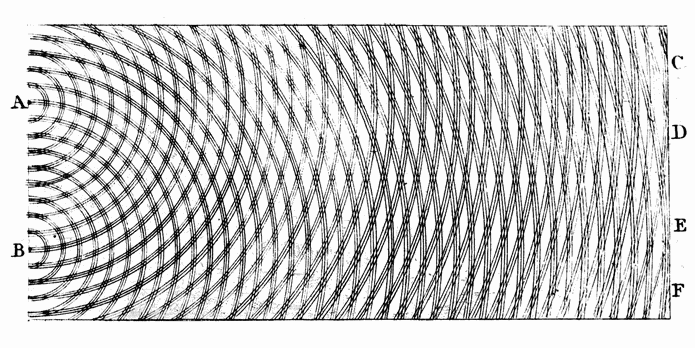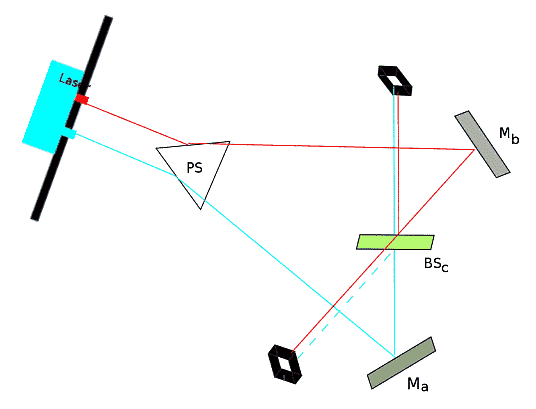QM prediction fails!
Aractus
There was a woman in the shop today. She had three bags nested inside each other in addition to her handbag. Her behaviour was mathematically computable; as long as you appreciate the process of chaos. Her bags are arranged in that way for shoplifting, she’s a thief. She thinks she can take her bags apart and then put them back together while stealing. She spent over an hour in the shop, and never bought anything. But, here’s some of the interesting behaviour (in addition to one which is plainly obvious): 1. she claimed she was a repeat-customer; we know every repeat customer we’re not stupid, 2. she asked a question about an item on the other side of the shop to try and get me away from the counter so she could shoplift there, 3. she tried to offend us so we would avoid her by saying such things as “I can’t stand f-ing jews”, and finally she claimed she “lost” her glasses and wanted me to find them for her, to which I responded “no, find them yourself” (within 1 minute of realising I wasn’t going to vacate the counter she promptly went and picked them up from where she had planted them). Does she seriously think I was born yesterday?
The human mind is an incredible thing. About 20 years ago, it was widely believed that there were around 1 trillion connections in the human brain, it’s now believed that number is anywhere between 100 trillion to one quadrillion (1,000 trillion), and opinions vary widely on this. But if it’s a mere 100 trillion that’d be roughly equivalent to 100 terabytes in computer terminology. Have you ever heard of a 100 TB HDD? No, we’ve only just cracked the 3TB mark, yet our brains contain far more bytes of information, they compress the information better and they can even access it much faster. So it’s not surprising that we can appreciate patterns as I’ve just explained above, apply a mathematical rule to it and appreciate how it is “predictable behaviour”.
Today I’m going to point out an explicit failure in current QM theory that I discovered last year. To do this I will explain the science as I go along, so that hopefully you understand the experiment and what it means. The reason I discovered this inconsistency is because I noticed an error in the assumptions made by the observations of the experiment. Too often people – including serious scientists – will fall into the trap of being impressed by science they don’t understand; indeed we even do the same thing when speakers talk using their detailed knowledge about subjects that we don’t understand. But when we use our minds we can notice predictable behaviour, exactly as my example above.
First is the theory of wave-particle duality, and for the purpose of this blog all you need to be aware of is that the theory says that quantum particles behave both like waves and particles, but never display this characteristic at the same time.
The double-slit experiment was first designed by a brilliant scientist named Thomas Young, and he designed it in order to prove that light is a wave. If you can imagine a tub of water with a wall in the middle and a singe slit in that wall, then you could imagine that if you made a wave on one side that went towards that wall, when it hits the wall a single wave will “form” from the wall on the other side. On the other hand if you had two slits in the wall and you made one wave as before on one side, when the wave hits the wall with the slits in it, each slit generates its own wave and you have two waves that form on the other side. If you follow this you’re doing great. If not, then refer to Young’s sketch of this principle:

For the double-slit experiment light is passed through two slits, and on the wall behind the slits an interference pattern is generated (as above). All you really need to know is that an interference pattern means wave-like activity is present; as if the photons are passing through “both” slits! The experiment has been performed with the same result shooting one photon at a time through the slits, and even shooting electrons one at a time too.
Now we’re going to get complicated, so I’m going to use this image from Wikipedia, and if you need more information you can view the page here.
A BBO crystal is used immediately after the slits. All you need to know about the BBO crystal is that it generates two photons from one photon, that are in a state of entanglement (something I will explain in a moment), and they travel in different directions, but the pair otherwise has the same properties.
Entanglement is a quantum phenomena which is not too well understood really, but basically once an entangled pair is created they are not only identical in every way to each other, but what happens to one affects the other; even in the future or the past, and even at any distance apart (in other words, there seems to be no way to break this connection). Once enough interference has taken place with each particle it is generally understood the entangled connection breaks down. However, for simplicity they can literally be thought of as being the exact same particle occupying two places in space-time.
Now, after the slits and the BBO crystal, the entangled photons each take different paths. One goes straight to a detector just like a normal double-slit experiment. The other one goes through a rather complicated series of beam splitters and mirrors, which allow each of the “top slit” and “bottom slit” photons to end up either 1: at a detector only with photons from the same slit or 2: at a detector where both end up.
This is called a “delayed choice” experiment because the pathway the “signal” photon takes (that’s the top photon) is shorter, it simply goes straight to a detector like a normal double-slit experiment. It’s called “erasure” since they think “which-way” information is erased when the idler photon (the bottom one that goes through mirrors and beam splitters) “randomly” ends up at a detector with photons from both slits.
They came to this conclusion because it is consistent with the predictions of Quantum Mechanics, but they failed to correctly observe their own results. I said earlier that an entangled pair for the purposes of this experiment can be thought of as being a single particle, right? Well then the “signal” photon tells us whether or not the “idler” photon has an interference pattern. When you look at it like this, the results tell a different story. Just like you need waves from both slits in the tub to make an interference pattern, the same is true at the quantum level. Just because they jumped to the conclusion that each particle is literally “interfering with itself” (because the pattern can be observed with shooting one photon at a time through the slits), doesn’t negate this fact.
So in this case, the signal photon is telling us that we need photons going through both slits to get an interference pattern; it is telling us that the interference is a consequence of photons from each slit interfering with each other (from the past and the future) somehow. But more to the point, the theory on wave-particle duality is that one can’t ever read both the information on each “state”, you can only make an observation on one or the other. But, let me tell you another thing, we don’t possess the technology to perform this experiment with each pathway the same length down to the plank length, no no no. Therefore, which-way information is still present at the conclusion of this experiment with the interference pattern, all you need is a precise enough stop-watch that can time the difference between each of the four possible pathways the “idler” photon takes (while arriving at the “shared” detectors). By the way if you have the means to reproduce a simplified version of this experiment and wish to confirm what I’ve said, please make this and let me know of the result:

Make the paths measurably different lengths (by say, 1mm or so) and use the detectors merely to detect an interference pattern (after all that’s all we’re interested in). I predict, with confidence, that you can still achieve an interference pattern.
Over the past couple of months I will admit I have been a little worried over my conclusions. But I’ve realised that every form of this experiment which attempts to read the “location” and the “signal” does so in such a way as to separate the path of the photons. Now you might say “well what about using light polarizer’s, how does that separate the paths” the answer of that is a wave going in an up-down direction can’t interfere with a wave going in a left-right direction. I’ve also realised that a total failure to recognise the special state of entanglement means that the results have been misinterpreted as if entanglement doesn’t occur. I’ve also realised that if splitting the top and bottom photons was enough to “collapse the wave form”, then QM does not predict that the waveform will reappear after you combine them again; rather QM predicts that you can’t “know” both the location and the motion of a particle; yet I say you can know, and we do know since the length could potentially be timed using an accurate enough device to allow us to distinguish the paths without “collapsing the waveform”.
But do you know the most important thing I realised? Scientists are interpreting the quantum world by their own field of reference (that’s the “human scale”). Newton’s laws of motion are widely used by scientists to this day, although they can never be used outside of the “human scale” because they are inaccurate. Instead you can use relativity or QM to predict with greater precision (yet it is a more complicated formula). Scientists think that the behaviour of quantum objects is “wave” or “particle” – because that’s what they see at their level! No, no, no. There’s some other form of matter that is neither wave nor particle that exists at the quantum level and as yet we just simply haven’t been able to fathom or imagine what it is, so what we do is we go to things we do know like “waves” and “particles” and insist on imposing those constraints on the quantum world. No doubt QM is extremely successful in many ways, and that proves that it is “on the right track” – but the same can be said for Newton’s laws of motion which we know to be nothing more than “interesting behaviour that happen at the human scale”.
[…] I say this a decade ago? Yes indeed I did, and admittedly I did get some things with my old analysis wrong, but I was […]